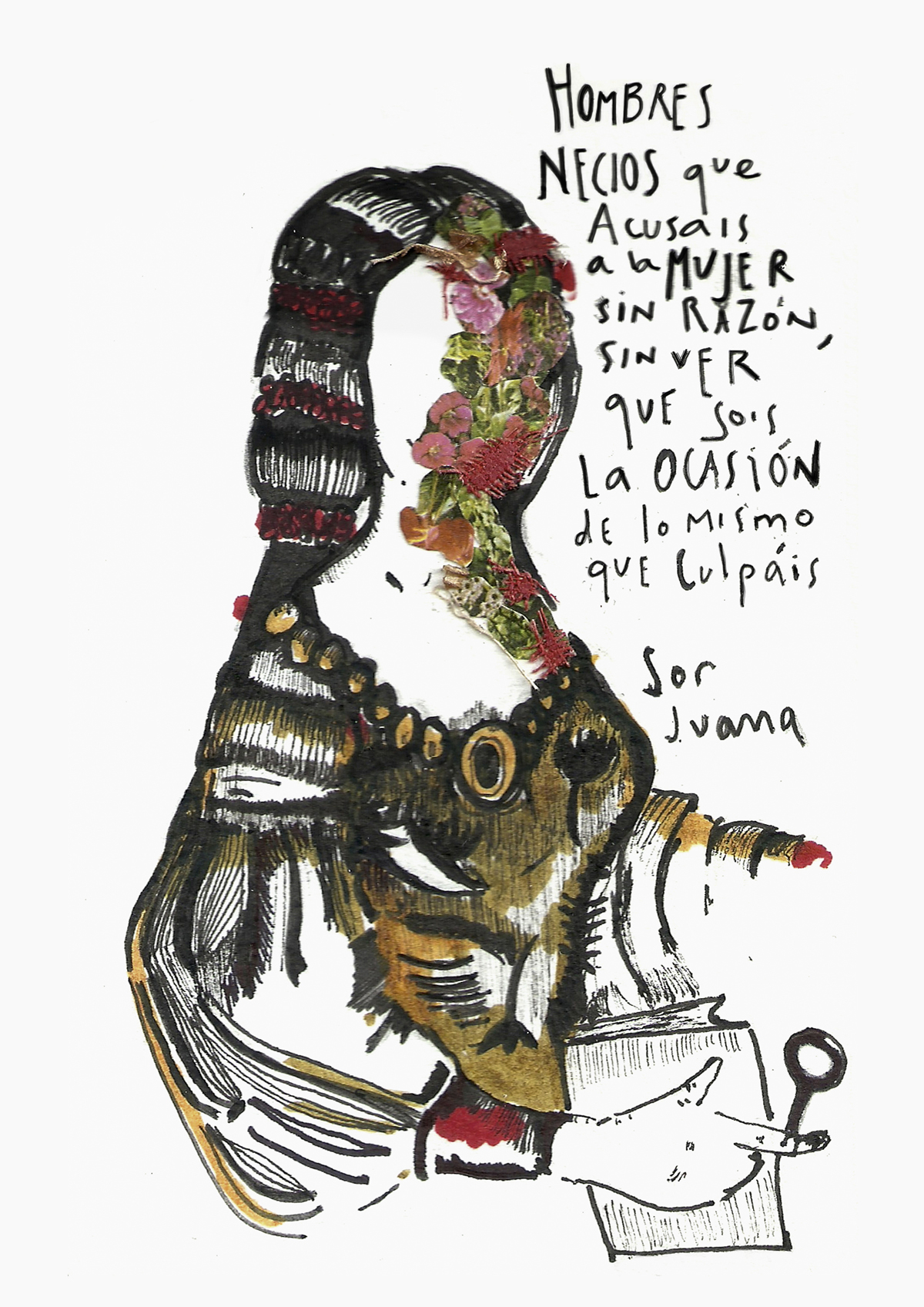How possible is it that the claims formulated by Sor Juana in the Reply to Sor Filotea (1691) correspond, perhaps remotely, to what Mary Wollstonecraft demanded a century later in A Vindication of the Rights of Woman (1792)?

1
That of Sor Juana in the Reply… is fundamentally, like that of Wollstonecraft in A Vindication…, a defense of individual knowledge and, at the same time, a collective instance: «I plead for my sex, not for myself.» Therefore, both texts can undoubtedly be read as a restrained but definitive defense of genre.
2
Though not exactly an epistolary text, A Vindication… is also a contestation, since Wollstonecraft is «responding» to the political theorists of the eighteenth century who supported the idea that women should not have access to education. Her main concern, like that of Sor Juana a hundred years earlier, was demanding a rational education for women, so that they could contribute, like men, to the formation of society. Thus Wollstonecraft replied to philosophers like Rousseau, for instance, who argued that education should prepare women to perform their role as wives, or writers like Burke, who was a staunch defender of the generic sexual differentiation that demarcated masculine identity in the world of reason and the feminine in the world of love and morality. Moreover, one of the major criticisms set forth by A Vindication is precisely against the false excessive sensibility of women: Wollstonecraft points out that reason and feelings must not act independently but serve one another. She says it is necessary to distinguish between true virtue and that which is only in appearance: «Public affections, as well as public virtues, must ever grow out of the private character… the present distinctions, established in society, corrode all private, and blast all public virtue.» According to her, what determined the sort of «inferiority» of women was circumstance, not nature itself: although «inferiority» was institutionalized through the impediment to access education, it also stemmed from communications that employed a language that eventually confused women, causing identity problems and distancing them from their true nature.
(Parenthesis)
This is perhaps the great meeting point between the two texts, since in the Reply there is also a new conception of power that rejects the division of the spheres of knowledge between the sexual genders. Sor Juana exposes a vast catalog of female figures of note and vindicates women in the fields of theology, history, and politics. She mentions rulers, writers, theologians: Deborah and the Queen of Sheba, both figures of the Holy Scriptures; Zenobia, the warrior queen who fought with her husband against the Romans and the barbarian nations; Cristina of Sweden, protector of the arts; Aspasia, whose ideas were acknowledged by Plato and Aristophanes. In fact, already in the Devout Exercises, written before the Reply, Sor Juana had chosen the figure of Mary to challenge theories that proposed the inferiority of woman by her nature.
3
The addressee, in both cases, is a male figure. In A Vindication, Wollstonecraft «replies» to Talleyrand-Périgord, while in the Reply Sor Juana contradicts Bishop Manuel Fernández de Santa Cruz. It is true that Sor Juana addressed her letter to Sor Filotea, but the very irony and continuous challenge to the male figure that operate throughout the text account for what is already known: Sor Juana was aware that the alleged female receiver was merely the Bishop’s mask. The demands of A Vindication, as mentioned, are addressed to French politician and diplomat Talleyrand-Périgord, who was Bishop of Autun between 1788 and 1791, and who wrote the decree concerning the education of women that would give rise to Wollstonecraft’s document.
4
In A Vindication, it is demanded that the laws be used to end female subordination, and that through them a system of education be guaranteed that contemplates the participation of both sexes: the government is challenged, in a word, to install an egalitarian education that allows women to lead more useful and rewarding lives, and a stand is taken against the books that constituted an instrument of social reform, as they contained the ideas of the time about the role of women in the new bourgeois society. In the most conservative realms, for instance, a new model of woman with a clear role of wife and mother was proposed, the education of which would aim to make her a moralizing agent. For Sor Juana, the main purpose of education should be the acknowledgment of women as human beings. In both cases, the demands had to do mainly with the right of women to be accepted as public and exemplary figures.
It is true that the times of Sor Juana and Mary Wollstonecraft may not be equivalent, and it is also true that the same rhetorical strategies are not deployed in both texts, but it cannot be denied that, with the minor difference that the nun anticipated Godwin’s companion no less than a century, their denunciation is the same: the right of women to education and, consequently, to recognize themselves as similar within the public sphere. No more and no less. It must be noted that both cases demonstrate one of the clearest shortcomings of the educational notions of their times—perhaps, a shortcoming that has constituted the primary contradiction of humanistic education.
* About the author:
Carlos Ávila (Caracas, 1980) holds a degree in Literature from Universidad Central de Venezuela and a Master’s degree in Spanish and Latin American Literatures from Universidad de Buenos Aires. He has published the books of short stories Desde el caleidoscopio de Dios (Equinoccio, 2007) and Mujeres recién bañadas (Mondadori, 2009). He received the prize of the XX José Antonio Ramos Sucre Biennial (2015) in the category of narrative with the book of short stories El giro animal (which remains unpublished). He currently resides in Buenos Aires, Argentina.
















